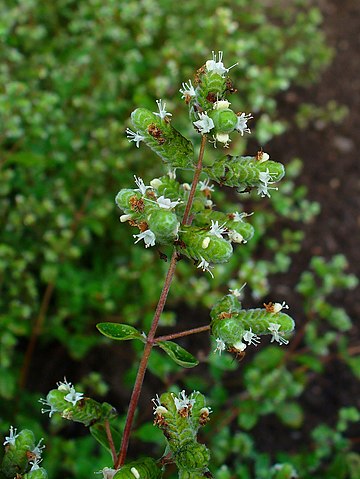Marjoram (Origanum majorana) is indeed a versatile herb with a delightful flavor and aroma that can enhance a wide range of culinary dishes. Here’s a closer look at marjoram and how you can use it to achieve culinary perfection:
1. Flavor Profile:
- Marjoram has a mild, sweet, and slightly floral flavor, with hints of citrus and pine. It’s often described as a milder version of oregano, to which it’s closely related.

2. Culinary Uses:
- Marjoram is a versatile herb that pairs well with a variety of foods. Here are some of its common culinary uses:
- Meats: It complements the flavors of poultry, pork, and lamb. Marjoram is a key ingredient in traditional sausage recipes.
- Tomato Dishes: It enhances the taste of tomato-based sauces, soups, and stews.
- Vegetables: Marjoram adds depth to roasted or grilled vegetables, especially mushrooms and zucchini.
- Breads and Pastas: Sprinkle marjoram on bread, pizza, or pasta dishes for a burst of flavor.
- Egg Dishes: It’s a great addition to omelets, frittatas, and scrambled eggs.
3. Fresh vs. Dried:
- Both fresh and dried marjoram can be used in cooking. Fresh marjoram has a more vibrant flavor, while dried marjoram is convenient and readily available. When substituting dried for fresh, use about one-third of the amount called for in the recipe.
4. Complementary Herbs:
- Marjoram pairs well with other herbs such as basil, thyme, rosemary, and parsley. Experiment with different combinations to create a unique flavor profile in your dishes.
5. Growing Marjoram:
- Marjoram is easy to grow in your garden or in a pot on your windowsill. Here are some tips for growing marjoram:
- Plant it in well-drained soil and provide full sun or partial shade.
- Water it regularly but avoid overwatering, as marjoram prefers slightly dry soil.
- Prune the plant to encourage bushier growth and prevent it from becoming too leggy.
6. Harvesting and Storing:
- You can start harvesting marjoram leaves once the plant is well-established. Harvest the leaves just before the plant flowers for the best flavor.
- To store marjoram, you can dry the leaves, or chop them and freeze them in ice cube trays with water or oil. Alternatively, you can keep fresh marjoram in a vase of water in the refrigerator for a short period.
7. Homemade Marjoram Oil:
- Infuse marjoram leaves in olive oil to create your own marjoram oil. It’s a flavorful addition to salads, marinades, or as a dipping sauce for bread.
Marjoram is a versatile herb that can elevate the flavor of a wide range of dishes. Whether you’re cooking a hearty stew, a tomato-based pasta sauce, or a simple omelet, marjoram can be the secret ingredient that brings your culinary creations to perfection.











